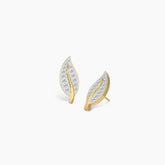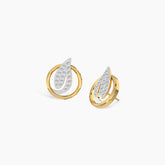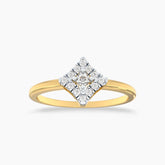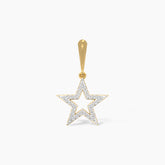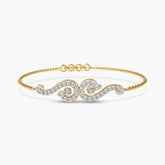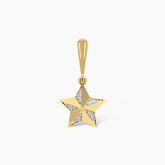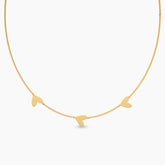How 916 Gold and 999 Gold Differ in Look, Feel, and Value: A Gold Comparison

When you decide to buy gold jewellery, you’ll quickly notice two numbers that appear again and again: 916 gold and 999 gold. They might just seem like codes, but these numbers tell you everything about the gold’s purity, durability, and character.
Understanding the difference is key to choosing the right piece for your lifestyle, budget, and purpose. Are you looking for a sturdy chain for daily wear, or a pure gold coin for investment? Let's break down what 916 and 999 gold really mean.
What is 916 Gold? (22 Carat)
916 gold is a gold alloy that contains 91.6% pure gold, with the remaining 8.4% made up of other metals like copper, silver, or zinc. This is also known as 22 Carat (22K) gold. It is often the more popular material for ear studs and rings since it is more durable, especially if you are concerned about scuffs and scratches.
The reason for adding other metals is simple: strength. Pure gold is extremely soft, so mixing it with harder alloys makes it much more durable and suitable for crafting jewellery. This blend allows for intricate designs, stone settings, and pieces that can withstand the knocks and bumps of everyday life.
Key Characteristics of 22K Gold:
-
Purity: 91.6% pure gold.
-
Hardness: Hard and durable, resistant to scratches and dents.
-
Use: Ideal for everyday jewellery like rings, bangles, and necklaces.
What is 999 Gold? (24 Carat)
999 gold is the purest form of gold you can buy, consisting of 99.9% pure gold. It’s also known as 24 Carat (24K) gold. Because it has no other metals mixed in, it’s considered the benchmark for pure gold.
This purity gives 999 gold a distinct, rich, and deep yellow color. However, it also makes the metal very soft and malleable. It can bend, dent, or scratch easily, which is why it’s less common for complex jewellery and more often used for investment-grade items.
Key Characteristics of 24K Gold:
-
Purity: 99.9% pure gold.
-
Hardness: Very soft and prone to damage.
-
Use: Primarily for gold bars, coins, and simple, ceremonial jewellery not intended for regular wear.
916 vs. 999 Gold: Look, Feel, and Value At a Glance
Look (Color and Shine)
The most immediate difference is the color. 999 gold has a saturated, deep yellow hue with an almost orange tint. Its lustre is rich and metallic. In contrast, 916 gold has a brighter, lighter yellow shine. The specific shade can vary slightly depending on the alloy metals used (copper adds a reddish tone, while silver lightens it).
Feel (Hardness and Durability)
This is where the two types differ most in a practical sense. Pick up a piece of 916 gold jewellery, and it feels solid and robust. It’s designed to hold its shape. 999 gold feels much softer. You could potentially bend a thin 999 gold piece with your fingers, and it scratches with little effort. This softness is why it’s not recommended for rings or bracelets that see a lot of action.
Value (Price and Investment)
When it comes to value, it’s about purpose.
-
Price: Gram for gram, 999 gold commands a higher price than 916 gold due to its nearly pure 99.9% gold content. For example, current market gold rates show 24K (999) gold priced significantly above 22K (916) gold, reflecting the premium you pay for purity and rarity.
-
Investment & Resale: 999 gold is the global standard for gold investment, widely used in bars and coins, and its value closely tracks the live market price of gold. Meanwhile, 916 gold also retains excellent resale value, especially in markets like Southeast Asia, where it is favored for jewellery trade-ins, its price reflects both gold content and craftsmanship.
The Role of Live Gold Price in Your Purchase
Gold prices, whether for 916 or 999 purity, change every day based on global economics, currency fluctuations, and market demand. This live market rate directly impacts the cost of your gold jewellery.
Your final price equals the gold weight multiplied by the current rate, plus making and wastage charges. By regularly checking live gold prices, you stay informed and can choose the best time to buy, maximizing value.
Tracking gold price trends helps you avoid overpaying and makes your gold purchase smarter, whether for jewellery or investment. Stay updated, and turn your purchase into a savvy decision.
Making the Right Choice
Choosing between 916 and 999 gold isn’t about which one is 'better,' but which one is better for you.
Consider buying 916 Gold if:
-
You want jewellery for daily or frequent wear.
-
You love detailed, intricate designs.
-
The piece will have gemstones that need a strong setting.
-
You want a balance of high gold content and practical durability.
Consider buying 999 Gold if:
-
Your primary goal is investment (in the form of bars or coins).
-
You are buying a symbolic or ceremonial piece that won't be worn often.
-
You prefer the deep, rich color of pure gold and understand it needs careful handling.
Your Gold, Your Story
Ultimately, the choice between 916 gold and 999 gold comes down to a simple trade-off: durability versus purity. One is made for life’s daily moments, strong enough to become a part of your routine. The other is a measure of pure value, perfect for marking a major milestone or securing an investment.
By understanding what each number signifies, you can make a confident choice that aligns with your intentions.
For those seeking beautifully crafted 916 gold jewellery to celebrate life’s most meaningful occasions, we invite you to checkout the latest jewellery collection at Vairam.
Shop conveniently online and enjoy secure checkout, free delivery, and customer support. Find the perfect piece that matches your style and story, crafted with care and precision.
Frequently Asked Questions About 916 vs 999 Gold
1. Is 916 gold considered real gold?
Yes, 916 gold is real gold with 91.6% purity. The remaining 8.4% consists of other metals added to enhance durability for everyday jewellery use.
2. Can I wear 999 gold jewellery every day?
It is not recommended, as 999 gold is very soft and prone to scratches and dents, so it's best reserved for special occasions and careful handling.
3. Which type of gold has better resale value?
Both have good resale value, but 999 gold fetches a price closer to the live market rate due to its purity, while 916 gold’s value includes workmanship charges.
4. Why does the color of 916 gold sometimes vary?
Color variation comes from alloy metals used - copper adds reddish tones, while silver lightens the yellow shade.
5. How can I identify if my gold is 916 or 999?
You can identify gold purity by checking the hallmark or stamp. 916 gold is marked "916" or "22K," while 999 gold is marked "999" or "24K." Professional testing can confirm authenticity.
6. What is the primary difference between 916 and 999 gold?
The main difference is purity: 916 gold has 91.6% pure gold, while 999 gold is 99.9% pure, nearly pure gold.
7. Which type of gold is better for making jewellery, 916 or 999?
916 gold is better for jewellery due to its strength and durability; 999 gold is softer and better suited for investment or ceremonial pieces.
8. Why is 999 gold more expensive than 916 gold?
999 gold commands a higher price due to its superior purity (99.9%) and the more complex refining process required to achieve this level, making it rarer and more valuable per gram.
9. Can I sell my 916 gold for the same price as 999 gold?
Prices differ based on purity; 999 gold typically fetches a higher price per gram. The final amount depends on market spot price, buyer policies, and any craftsmanship involved.

